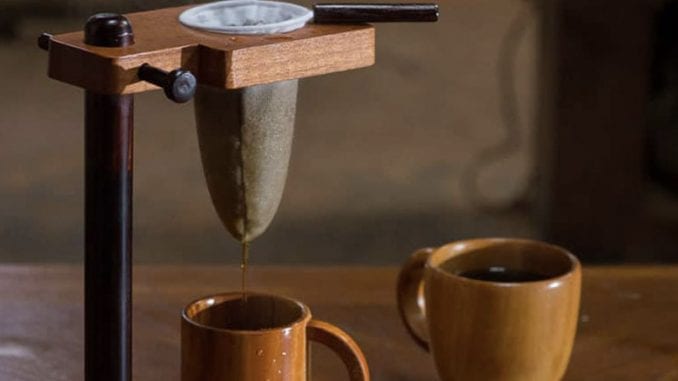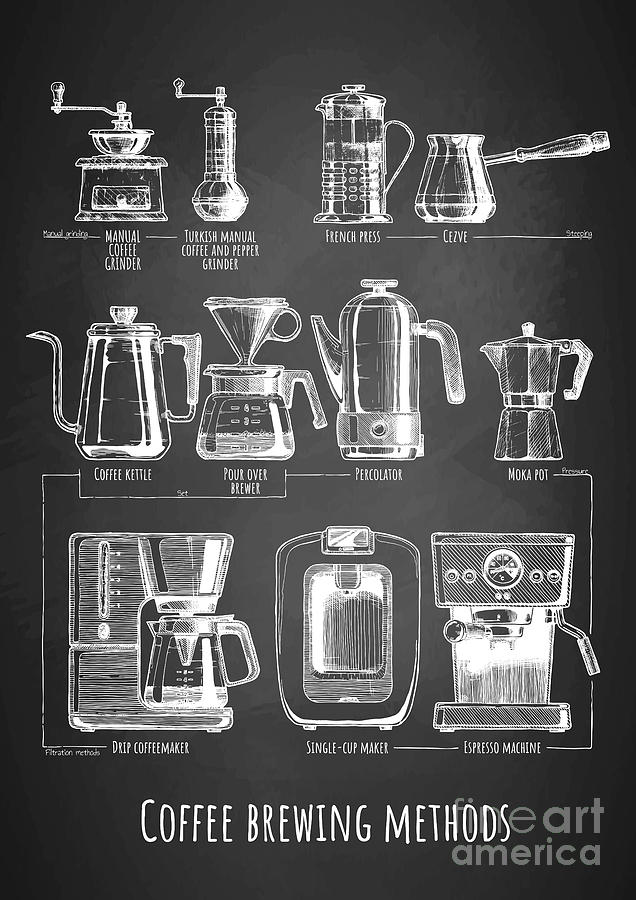Coffee Brewing Methods Demystified: From French Press to Cold Brew
Coffee Brewing Methods Demystified: From French Press to Cold Brew
Blog Article
Discovering the Art of Coffee Brewing: A Comprehensive Overview to Improving Your Cup
The art of coffee developing is a complex discipline that merges science with individual expression, where the selection of beans, water high quality, and developing methods merge to create a refined sensory experience. Recognizing the nuances of different coffee beans, particularly the distinctions in between Arabica and Robusta, is essential for any aficionado. The option of ideal devices and precise interest to developing specifications can dramatically affect the final result. As we discover these components, one must think about just how even small adjustments can lead to profound adjustments in flavor and aroma-- what might these adjustments reveal about your perfect mug?
Understanding Coffee Beans
To really value the art of coffee brewing, one have to first recognize the fundamental element: coffee beans. Coffee beans largely fall right into 2 categories: Arabica and Robusta.

In addition, the processing technique-- whether washed, natural, or honey-- impacts the beans' last preference. Understanding these elements allows brewers to choose the appropriate beans that align with their preferred taste account, ultimately enhancing the coffee brewing experience. coffee brewing methods. This comprehension is vital for anyone desiring grasp the craft of making the excellent mug of coffee
Brewing Methods Discussed
Lots of fanatics locate that the choice of developing technique dramatically influences the last flavor and fragrance of their coffee. Each approach harnesses different removal strategies, influencing the coffee's personality and splendor.
Drip developing, one of one of the most prominent methods, makes use of a device to leak hot water with ground coffee, producing a consistent and tidy mug. French press, on the various other hand, submerses coffee grounds in warm water, enabling a fuller body and even more durable flavor, as oils and fine bits stay in the brew.
Pour-over brewing supplies a thorough technique, where water is by hand poured over coffee premises, permitting exact control over extraction time and temperature level, resulting in a bright and nuanced mug.
Espresso, a concentrated coffee made under stress, is recognized for its strong flavor and luscious structure, acting as the base for numerous coffee beverages, including coffees and lattes.
Essential Tools Needed
What equipment is crucial for making a fantastic mug of coffee? The structure of any effective coffee brewing procedure lies in high quality tools customized to your preferred approach. Firstly, a trusted coffee mill is important; freshly ground beans substantially enhance taste and scent. Choose a burr grinder, which makes certain uniform bit dimension, necessary for optimal extraction.
Following, consider your developing device. Choices vary from drip coffee manufacturers and pour-over configurations to French presses and coffee machines. Each technique uses distinctive taste profiles and developing strategies, so pick one that aligns with your taste preferences.
A specific scale is also vital, permitting you to gauge coffee and water precisely, which is vital for consistency. Furthermore, a thermostat can aid check water temperature level, as it directly affects removal quality.
Mastering Water Quality
The top quality of water made use of in developing coffee plays a substantial role in establishing the last flavor profile of the cup. Numerous variables contribute to water high quality, including mineral content, pH degree, and total purity. Ideally, water ought to be without contaminants and impurities, as these can detrimentally impact the taste of coffee.
Minerals, such as calcium and magnesium, enhance the removal of tastes from the coffee grounds, while maintaining a well balanced pH level-- around 6.5 to 7.5-- is necessary for ideal extraction. Water that is also soft may lead to under-extraction, causing weak or sour flavors, while overly tough water can create a bitter or harsh mug.
For the finest outcomes, filtered water is recommended, as it reduces the existence of chlorine and other unwanted substances typically located in faucet water. In addition, consider utilizing water with an Overall Dissolved Solids (TDS) level between 150-200 ppm, which is usually suitable for coffee informative post brewing. By mastering water high quality, you can lay a solid foundation for attaining a regularly excellent cup of coffee, permitting the special attributes of your picked beans to beam through.

Tips for Flavor Enhancement
Enhancing the taste of your coffee can substantially elevate your developing experience and highlight the distinct subtleties of your picked beans. To achieve this, think about numerous essential variables that affect preference.
Firstly, the grind dimension plays a crucial role. A finer grind increases removal, resulting in bolder flavors, while a coarser grind returns a milder cup. coffee brewing methods. Readjust your grind according to your brewing method to achieve ideal outcomes
Secondly, experiment with mixture time. Over-extraction can result in anger, while under-extraction lead to a sour preference. Purpose for a mixture time that stabilizes these extremes, typically in between two to 4 minutes, depending on your technique.
Furthermore, temperature is a critical aspect. Developing with water that is as find more well hot can swelter the coffee, while water that is also trendy may fall short to draw out ample flavor. The optimal temperature variety is 195 ° F to 205 ° F(90 ° C to 96 ° C)
Final Thought) )))) To conclude, the art of coffee brewing is a complex technique that requires a deep understanding of various elements, including bean option, developing approaches, and water quality. Mastery of essential tools and focus to information in grind size, brew time, and temperature level are vital for attaining optimum extraction. By incorporating these components, coffee fanatics can boost their developing techniques, resulting in a mug that not just satisfies personal choices but also showcases the rich intricacy of coffee flavors.
The art of coffee brewing is a complex technique that merges scientific research with personal expression, where the selection of beans, water high quality, and developing techniques merge to create a polished sensory experience.To really value the art of coffee brewing, one have to first recognize the foundational element: coffee beans. Brewing with water that is as well warm can scorch the coffee, while water that is also awesome might fall short to remove sufficient taste. In conclusion, the art of coffee brewing is a complex practice that needs a deep understanding of numerous aspects, including bean choice, developing methods, and water high quality. By incorporating these parts, coffee find here lovers can elevate their brewing strategies, resulting in a mug that not only satisfies individual choices however also showcases the rich complexity of coffee tastes.
Report this page